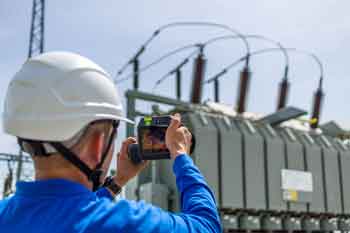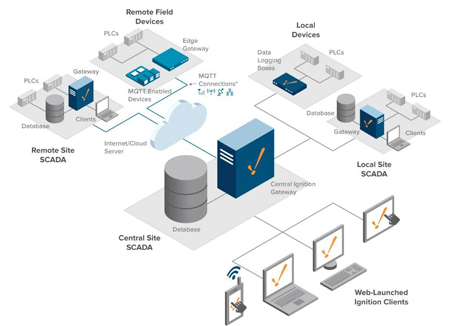Transformer Testing Saves Money

Substation Relay Protection Training
Our customized live online or in‑person group training can be delivered to your staff at your location.

- Live Online
- 12 hours Instructor-led
- Group Training Available
Download Our OSHA 4474 Fact Sheet – Establishing Boundaries Around Arc Flash Hazards

- Understand the difference between arc flash and electric shock boundaries
- Learn who may cross each boundary and under what conditions
- Apply voltage-based rules for safer approach distances
Transformer testing evaluates insulation resistance, winding integrity, and load capacity to ensure efficiency, reliability, and safety. Routine diagnostic tests identify faults early, prevent downtime, and extend service life in electrical systems and power distribution networks.
What is Transformer Testing?
Transformer testing is the process of evaluating transformer performance, safety, and reliability through diagnostic electrical tests and inspections.
✅ Ensures insulation resistance, winding condition, and thermal stability
✅ Prevents failures with predictive maintenance and early fault detection
✅ Verifies load performance for efficient, safe power distribution
Why Transformer Testing Matters
Electrical transformers play a crucial role in power distribution and transmission, converting voltage levels to meet the requirements of various electrical systems. Regular inspection is essential to ensure the safety, efficiency, and reliability of these critical components. The primary purpose is to detect insulation breakdowns, winding faults, or voltage ratio discrepancies before they result in system failures or costly outages. A comprehensive examination and assessment are crucial for verifying the performance, efficiency, and safety of all electrical transformers used in modern power systems.
Electrical Transformer Maintenance Training
Substation Maintenance Training
Request a Free Training Quotation
Electrical transformers play a crucial role in power distribution and transmission, converting voltage levels to meet the requirements of various electrical systems. Therefore, inspection is essential to ensure the safety, efficiency, and reliability of these critical components in the electrical infrastructure. Routine inspection helps identify insulation or winding faults early, whether in current transformers, potential transformers, or other instrument-class devices.
The primary purpose of the investigation is to identify potential issues or failures, such as winding insulation breakdown or ratio discrepancies, and address them before they cause extensive damage or system failures. It helps maintain optimal performance, prevent costly repairs or replacements, and guarantee the safety of the electrical grid.
FREE EF Electrical Training Catalog
Download our FREE Electrical Training Catalog and explore a full range of expert-led electrical training courses.

- Live online and in-person courses available
- Real-time instruction with Q&A from industry experts
- Flexible scheduling for your convenience
Standards and Norms
Transformer testing is guided by international standards that define procedures, acceptance values, and safety precautions. Commonly referenced standards include:
-
IEEE C57.12.90 – Standard test code for liquid-immersed distribution, power, and regulating transformers
-
IEC 60076 – Power transformers standard, covering routine, type, and special tests
-
ANSI/IEEE C57.152 – Diagnostic field testing of fluid-filled units
These standards outline acceptance thresholds for parameters such as insulation resistance (typically in megaohms per kV), dielectric strength, and power factor values, ensuring consistency and reliability across the industry. Field and lab analysis of dry-type transformers focuses on thermal behavior, insulation quality, and safe load handling.
Common Transformer Tests
Diagnostic tests on isolation transformers and step-down transformers ensure reliable operation in both industrial and commercial environments.
Dielectric Testing
Dielectric withstand (hipot) tests stress insulation by applying high voltage above normal operating levels. This exposes weaknesses that could otherwise lead to service failure. Standards specify ramp-up rates, hold times, and leakage current limits. If insulation breaks down under test, corrective measures must be taken immediately.
Insulation Resistance and Power Factor
Insulation resistance tests measure leakage paths between windings and core. High resistance indicates healthy insulation; low values point to moisture or deterioration. Power factor or dissipation factor tests provide a more sensitive assessment of insulation aging, allowing for a gradual trend over time to reveal slow degradation.
Transformer Turns Ratio (TTR) Test
The turns ratio test compares the primary and secondary winding voltages to verify accurate voltage transformation. Deviations can indicate shorted turns, open circuits, or incorrect winding connections. Acceptable error is typically within ±0.5%.
Winding Resistance
Winding resistance measurements detect loose connections, broken strands, or localized heating issues. Variations between phases or changes over time may indicate the development of faults.
Sweep Frequency Response Analysis (SFRA)
SFRA applies a frequency sweep to the unit and measures response curves. Comparing new traces against baseline data reveals winding displacement, deformation, or core movement following faults or transport.
Partial Discharge (PD) Testing
Partial discharges are small electrical sparks within insulation that erode material over time. PD tests detect these discharges long before a complete breakdown occurs. Trending PD levels helps identify insulation weaknesses and plan proactive repairs.
Dissolved Gas Analysis (DGA)
DGA analyzes insulating oil for dissolved gases formed by electrical or thermal faults. Hydrogen may indicate corona discharge, while acetylene suggests arcing. Diagnostic methods such as the Duval Triangle or key gas ratios help pinpoint fault types and severity.
Thermal and Load Tests
Temperature rise tests assess a unit's ability to manage heat under load. Excessive temperature rise can reduce the lifespan of insulation. Load and impedance tests ensure accurate performance under rated conditions.
Condition Monitoring and Prognostics
Inspection is not a one-time event but part of an ongoing maintenance strategy. By trending insulation power factor values, gas evolution patterns in DGA, or SFRA traces, operators build a long-term health profile. Utilities are increasingly using device health indices and remaining life models to inform asset replacement decisions. Emerging tools, such as AI and machine learning, improve fault classification, enabling the prediction of failures earlier and reducing unplanned outages. Evaluating transformer ratings and transformer sizing is closely linked to examination, as capacity limits must be validated under actual operating conditions.
Safety and Limitations
High-voltage testing must always be performed with strict safety protocols: grounding equipment, isolating circuits, and protecting personnel from accidental contact. Some tests, particularly high-voltage dielectric tests, can stress aged insulation and must be applied cautiously. Environmental factors, such as humidity, ambient temperature, and vibration, can affect readings; therefore, conditions should be recorded alongside test results.
Test Your Knowledge About Electrical Transformers!
Think you know Electrical Transformers? Take our quick, interactive quiz and test your knowledge in minutes.
- Instantly see your results and score
- Identify strengths and areas for improvement
- Challenge yourself on real-world electrical topics
Case Example
In one utility application, rising acetylene levels identified by dissolved gas analysis signalled internal arcing. The intervention prevented catastrophic failure and saved on replacement costs. In another case, SFRA testing after a shipping event revealed winding displacement, allowing corrective repair before energization.
Integration Into Maintenance Strategy
Transformer testing should be scheduled as part of a preventive or condition-based maintenance program. Regular intervals—annually or after major events, such as earthquakes or tectonic plate movements—help ensure ongoing reliability. Test data should be recorded, trended, and compared against baseline factory results to reveal subtle deterioration before failure occurs.
Transformer testing is integral to ensuring electrical safety, reliability, and efficiency. By performing a combination of dielectric, insulation, ratio, resistance, oil, and advanced diagnostic tests, technicians can detect and address potential issues before they escalate. Combined with condition monitoring, trending, and predictive analytics, unit examination helps protect critical electrical infrastructure and ensure a long service life. Understanding transformer losses during inspection helps utilities and engineers maintain grid efficiency while applying lessons from single-phase transformer connections and advanced configurations, such as delta vs wye.







